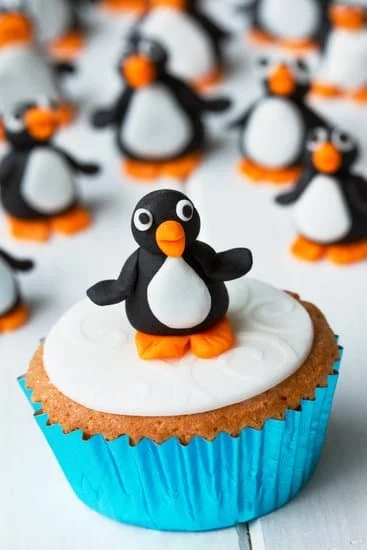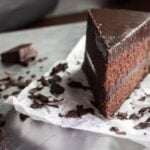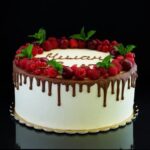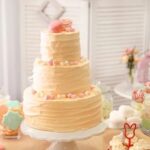When it comes to taking your baking skills to the next level, mastering the art of icing cake decorations can truly elevate your creations. From simple swirls and rosettes to intricate designs and patterns, icing can transform a plain cake into a work of art.
In this article, we will explore the essential tools and ingredients needed for making icing cake decorations, the different types of icing you can use, and provide a step-by-step guide on how to create basic decorations.
Icing cake decorations are special because they allow you to showcase your creativity and personalize your cakes for any occasion. Whether you’re celebrating a birthday, wedding, or simply want to impress your friends and family with a beautifully decorated dessert, mastering the techniques of icing decorations is key. With the right tools and ingredients at your disposal, you can easily turn a plain cake into a showstopper that will wow everyone.
From buttercream to fondant to royal icing, there are various types of icings that you can use for decorating cakes. Each type has its own unique qualities and uses, allowing you to achieve different textures, finishes, and designs on your cakes. By understanding the characteristics of each type of icing and knowing when to use them, you can unleash your creativity and create stunning decorations that will take your baking game to new heights.
Essential Tools and Ingredients for Making Icing Cake Decorations
When it comes to making icing cake decorations, having the right tools and ingredients is crucial to achieving professional-looking results. Here are some essential items you will need to create beautiful and intricate designs on your cakes:
- Piping bags: These are a must-have for creating detailed designs with icing. Make sure to have a few on hand in different sizes for various decorating needs.
- Piping tips: Invest in a set of piping tips with different shapes and sizes to achieve varying designs, from simple borders to intricate flowers.
- Icing spatula: A good quality icing spatula will help you smooth out the frosting on your cakes before adding decorations, ensuring a clean canvas for your designs.
- Gel food coloring: To add vibrant colors to your icing, use gel food coloring as it is more concentrated and won’t water down your frosting.
In addition to the tools mentioned above, having the right ingredients is also key to successful cake decorating. Here are some staple ingredients you should have in your pantry for making icing cake decorations:
- Butter: Unsalted butter is commonly used in buttercream frosting for its rich flavor and smooth texture.
- Confectioners’ sugar: Also known as powdered sugar, this ingredient is essential for creating sweet, stable icing that can hold its shape when piped onto cakes.
- Vanilla extract: Adding a touch of vanilla extract to your icing can enhance the overall flavor of your cake decorations.
- Corn syrup: This ingredient can be used in royal icing to achieve a glossy finish on decorations or flood icing designs.
With the right tools and ingredients at hand, you’ll be well-equipped to start creating stunning icing cake decorations that will impress both yourself and others with your baking skills.
Different Types of Icing for Cake Decorations and Their Uses
When it comes to creating stunning cake decorations, the type of icing you use plays a crucial role in achieving the desired look and feel. Different types of icing offer unique textures, flavors, and decorating capabilities that can elevate your baked goods to the next level. Some popular options for cake decorations include buttercream, royal icing, fondant, and ganache.
Buttercream icing is a versatile option that is easy to work with and can be flavored and colored in various ways. It is perfect for creating smooth finishes on cakes and piping intricate designs such as flowers or borders. Royal icing, on the other hand, dries hard and is ideal for creating delicate lace patterns, intricate details like filigree work, or even building 3D structures for cake decorations.
Fondant is a pliable sugar paste that can be rolled out to cover cakes smoothly or shaped into intricate decorations like bows, figures, or ruffles. Ganache, a mixture of chocolate and cream, creates a rich and glossy finish that is perfect for drips or smooth coatings on cakes.
Each type of icing has its own unique qualities that cater to specific decorating needs, so choosing the right one for your cake decoration project is essential for achieving the best results possible.
Step-by-Step Guide to Making Basic Icing Cake Decorations
One of the most exciting elements of baking is decorating cakes with beautiful and intricate icing designs. Whether you’re a beginner or an experienced baker looking to enhance your skills, learning how to make icing cake decorations can take your creations to the next level. In this step-by-step guide, we will walk you through the process of making basic icing cake decorations that are sure to impress your friends and family.
To start, you’ll need a few essential tools and ingredients for making icing cake decorations. These include piping bags, various piping tips (such as round tips, star tips, and leaf tips), gel food coloring, offset spatulas, and different types of frosting like buttercream or royal icing. Having these tools on hand will make it easier for you to create a variety of designs on your cakes.
Once you have gathered your tools and ingredients, it’s time to start creating your icing cake decorations. Begin by preparing your frosting of choice – whether it’s buttercream for a smooth finish or royal icing for more intricate designs. Then, fill your piping bag with the frosting and choose a piping tip that suits the design you have in mind.
Practice piping on a piece of parchment paper before moving onto your cake to ensure precision in your decorations. Start with simple patterns like dots, swirls, or stars before progressing to more complex designs as you gain confidence in your skills.
Advanced Techniques for Creating Intricate Icing Designs on Cakes
When it comes to creating intricate icing designs on cakes, there are a variety of advanced techniques that can take your cake decorating skills to the next level. These techniques allow you to add more dimension, texture, and detail to your icing cake decorations, making them truly stand out. From piping techniques to advanced icing tools, here are some key methods for creating elaborate and beautiful designs on your cakes.
Piping Techniques
One of the most common ways to create intricate icing designs on cakes is through piping. Piping involves using a pastry bag or piping bag with various tips to apply different shapes and textures with precision. From classic swirls and rosettes to intricate lace patterns and floral designs, piping allows for endless creativity in decorating cakes. Practice different pressure levels and movements to master the art of piping and create stunning designs.
Fondant and Gum Paste
Fondant and gum paste are versatile mediums that can be used to create detailed decorations for cakes. Fondant is a rolled icing that can be shaped, cut, and molded into various shapes and figures. Gum paste, on the other hand, dries harder than fondant and is often used for creating delicate flowers, leaves, or other intricate decorations. By combining these two mediums with your piping skills, you can achieve complex and lifelike decorations on your cakes.
Brush Embroidery
Brush embroidery is a technique that involves using a paintbrush to create delicate lace-like patterns on cakes. This advanced technique requires patience and precision but can result in stunningly intricate designs. To achieve the brush embroidery effect, pipe a base layer of icing onto the cake surface, then use a damp brush to drag and blend the icing outward in fine lines or petals. The result is an elegant design that adds sophistication to your cake decorations.
By mastering these advanced techniques for creating intricate icing designs on cakes, you can elevate your baking game and impress your friends and family with beautifully decorated treats for any occasion. Experiment with different methods, practice regularly, and don’t be afraid to get creative with your designs. With time and dedication, you’ll become a pro at making stunning icing cake decorations that will leave everyone amazed at your skills.
Tips and Tricks for Perfecting Your Icing Cake Decorations
When it comes to perfecting your icing cake decorations, there are a few tips and tricks that can make a world of difference in the final outcome. Whether you’re a beginner or an experienced baker, these techniques can help take your creations to the next level. Here are some helpful tips for mastering the art of decorating with icing:
- Use the right consistency: One of the most important aspects of creating beautiful icing cake decorations is getting the consistency of your icing just right. Too thin, and your designs may not hold their shape; too thick, and you’ll struggle to pipe smoothly. Experiment with adding small amounts of liquid or powdered sugar until you achieve a consistency that is easy to work with but holds its shape when piped.
- Practice piping techniques: The key to creating intricate designs with icing is mastering different piping techniques. Invest in a variety of piping tips and practice creating different shapes and patterns on parchment paper before moving on to your cakes. From simple stars and swirls to more complex flowers and borders, practicing these techniques will help you become more confident in your decorating skills.
- Keep it chilled: To ensure that your icing decorations hold their shape and set properly, it’s essential to work with chilled icing. If at any point during the decorating process you find that your icing is becoming too warm and soft, simply pop it in the refrigerator for a few minutes to firm up before continuing.
With these tips in mind, you’ll be well on your way to creating stunning icing cake decorations that will impress friends and family alike.
Creative Ideas for Icing Cake Decorations for Different Occasions
Weddings and Anniversaries
One of the most popular occasions for elaborate cake decorations is weddings and anniversaries. For these special events, consider creating elegant floral designs using royal icing or buttercream. You can also personalize the cake with monogram initials or a delicate lace pattern. Adding shimmering edible pearls or gold leaf accents can elevate the overall look and give it a luxurious touch.
Birthdays
When it comes to birthday cakes, the sky’s the limit in terms of creativity. For children’s birthdays, consider making cartoon characters or favorite superheroes out of fondant or gum paste. For adults, you can create personalized cake toppers that reflect their hobbies or interests. Adding vibrant colors and playful elements like sprinkles or edible glitter can make the cake truly stand out and bring joy to the celebration.
Holidays
During holidays such as Christmas, Halloween, Easter, or Thanksgiving, you can have fun experimenting with themed icing decorations. For Christmas, try creating snowflakes, holly leaves, or reindeer using piped royal icing. For Halloween, go all out with spooky designs like ghosts, bats, or pumpkins made from fondant. And for Easter, delicate floral patterns using pastel-colored icing can bring a festive touch to your cakes.
Whether it’s a formal wedding reception, a lively birthday party, or a festive holiday gathering, incorporating unique and creative icing cake decorations can truly elevate the occasion and leave a lasting impression on your guests. By exploring different techniques and experimenting with various designs, you can make each cake special and tailor-made for the specific event you are celebrating.
Troubleshooting Common Issues When Making Icing Cake Decorations
When making icing cake decorations, it is common to encounter various issues that can affect the final outcome of your creation. One common problem that bakers face is icing that is too runny or too thick. If your icing is too runny, you can add more powdered sugar to thicken it up. On the other hand, if your icing is too thick, you can add a little bit of milk to thin it out to the desired consistency.
Another issue that may arise when making icing cake decorations is air bubbles in the icing. To avoid this problem, make sure to gently stir your icing instead of vigorously whipping it which can introduce air into the mixture. If air bubbles do appear, you can try using a toothpick to carefully pop them and smooth out the surface of your decoration.
Additionally, colors not turning out as vibrant as expected is another common problem faced by bakers. To ensure bright and bold colors in your icing decorations, use gel food coloring instead of liquid coloring for more intense hues. It’s also important to remember that colors may deepen over time, so start with lighter shades if you want a specific color intensity for your cake decorations.
| Common Issues | Solutions |
|---|---|
| Icing too runny or too thick | Add more powdered sugar for thickness or milk for thinning |
| Air bubbles in icing | Gently stir icing and use a toothpick to remove air bubbles if they form |
| Fading colors in icing decorations | Use gel food coloring for vibrant colors and consider starting with lighter shades for desired intensity |
Conclusion
In conclusion, mastering the art of creating icing cake decorations can truly elevate your baking game to new heights. These delicate and intricate designs add a touch of elegance and creativity to your cakes, making them truly special for any occasion. With the right tools, ingredients, and techniques, you can transform a simple cake into a stunning masterpiece that will impress your friends and family.
Learning how to make icing cake decorations may seem daunting at first, but with practice and patience, you can achieve beautiful results. Whether you are a beginner or have some experience in cake decorating, there are endless possibilities to explore in terms of design and creativity. From basic swirls and rosettes to elaborate flowers and figures, the sky’s the limit when it comes to creating stunning icing decorations for your cakes.
So go ahead, experiment with different types of icing, try out new techniques, and don’t be afraid to let your creativity shine through. With these tips and tricks at hand, you’ll soon be able to create show-stopping cakes that will leave everyone in awe of your skills. Elevate your baking game today by learning how to make icing cake decorations – it’s a rewarding journey that will surely sweeten every celebration.
Frequently Asked Questions
How Do You Mix Icing Sugar for Decorations?
Mixing icing sugar for decorations requires a precise balance of consistency and flavor. Start by sifting the icing sugar to remove any lumps, then add a little water or milk at a time until you reach the desired thickness. To enhance the flavor, consider adding some vanilla extract or other flavorings to the mixture.
What Is the Best Frosting to Use for Cake Decorating?
When it comes to cake decorating, the best frosting to use depends on personal preference and the desired outcome. Buttercream frosting is a popular choice due to its versatility and ability to hold shape well for piped decorations. Cream cheese frosting is another delicious option that adds a tangy flavor to complement various cake flavors.
How Do You Ice Cake Decorations?
To ice cake decorations, start by applying a crumb coat of frosting to seal in any loose crumbs on the cake’s surface. Once this layer has set, apply a thicker layer of frosting using an offset spatula or piping bag depending on the design you want to create.
Smooth out the icing with a bench scraper for a clean finish or get creative with different textures using various tools like combs or textured mats.

Welcome to our cake decorating blog! My name is Destiny Flores, and I am the proud owner of a cake decorating business named Cake Karma. Our mission is to provide delicious, beautiful cakes for all occasions. We specialize in creating custom cakes that are tailored specifically to each customer’s individual needs and tastes.





